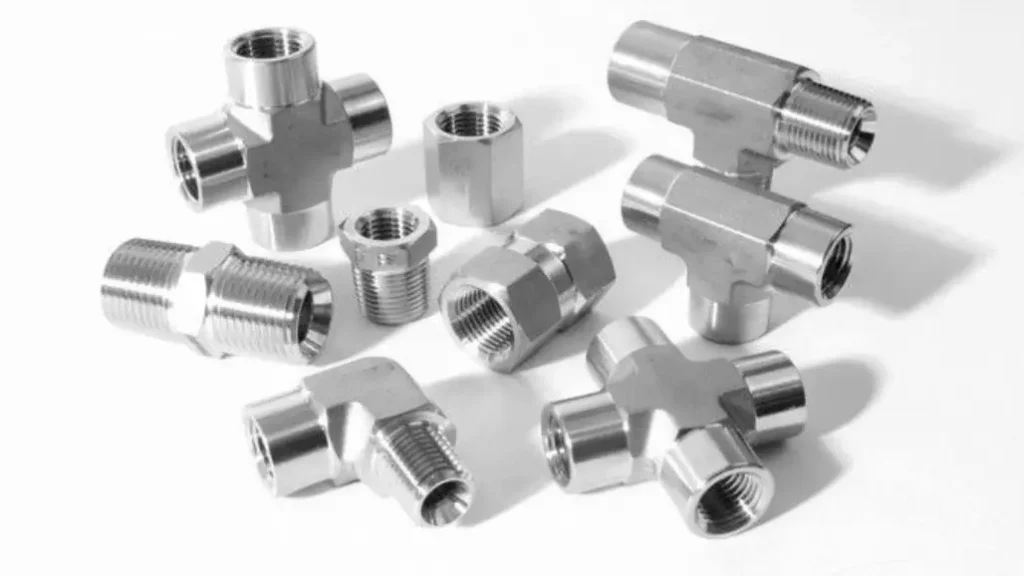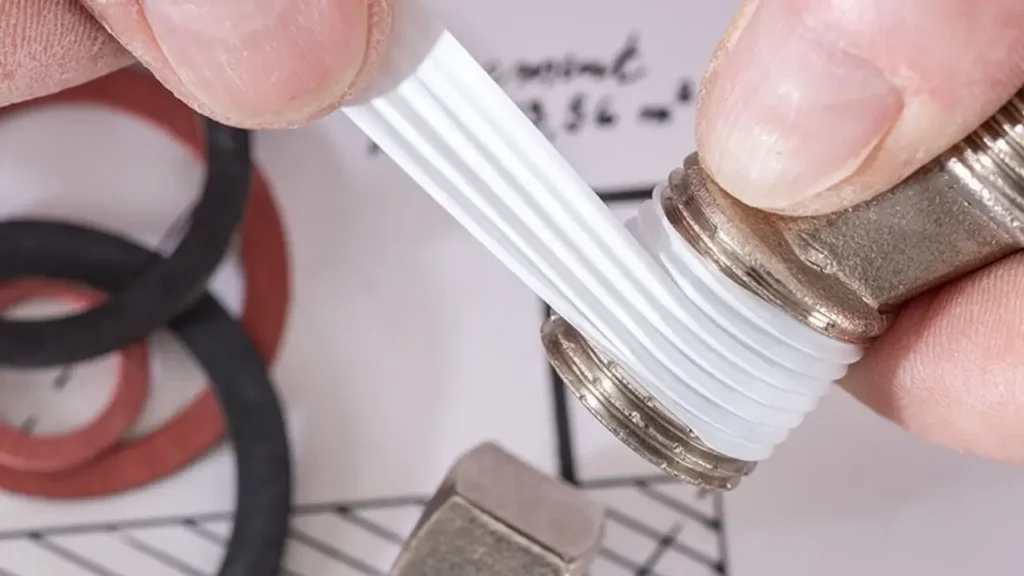Are you tired of leaky pipes and hose fittings? Frustrated with constant drips and spills? This blog is your ultimate resource for achieving perfect seals on NPT fittings.
NPT (National Pipe Taper) fittings are widely used in plumbing, hydraulics, and various industrial applications. While they offer a strong connection, ensuring a leak-free seal requires proper technique and the right materials.
What Are NPT Fittings?

NPT stands for National Pipe Taper. It’s a standard for tapered threads used on pipes and fittings. These fittings are commonly used in plumbing, hydraulics, and various industrial applications.
Key Characteristics of NPT Fittings:
- Tapered Threads: The male end of the fitting is tapered, creating a tighter seal as it’s screwed into the female counterpart.
- Sealant Required: While the taper helps create a seal, a sealant like Teflon tape or pipe dope is typically used for added security against leaks.
- Wide Application: NPT fittings are versatile and used in various industries due to their reliability and strength.
Would you like to know more about the different types of sealants used with NPT fittings?
How to Seal NPT Fittings?

Properly sealing NPT fittings is crucial to prevent leaks and ensure system integrity. While the tapered threads of NPT fittings provide a good seal, using a sealant is generally recommended for added security.
Steps to Seal NPT Fittings:
- Clean the Threads: Remove any dirt, debris, or old sealant from both the male and female threads.
- Choose Your Sealant:
- Teflon Tape: Ideal for most applications, especially water and gas lines. Wrap the tape clockwise around the male threads, starting at the end and moving towards the threads.
- Pipe Dope (Thread Sealant): Offers a thicker, more robust seal. Apply a generous but not excessive amount to the male threads.
- Combination: For demanding applications, consider using both Teflon tape and pipe dope.
- Assemble the Fittings: Carefully screw the male fitting into the female fitting by hand until it meets resistance.
- Tighten Securely: Use a wrench to tighten the fitting to the manufacturer‘s recommended torque. Overtightening can damage the threads and cause leaks.
- Check for Leaks: Once tightened, inspect the joint for any signs of leakage. If there are leaks, tighten the fitting slightly more or reapply sealant as needed.
Tips for Success:
- Wrap Teflon tape evenly and tightly.
- Avoid over-applying pipe dope.
- Use the correct type of sealant for your application.
- Tighten the fittings gradually to prevent cross-threading.
- For critical applications, consider using a torque wrench.
By following these steps and using the right sealant, you can achieve reliable and leak-free NPT connections.
Do NPT Fittings Need Sealant?

While NPT fittings are designed with tapered threads to create a seal, using a sealant is highly recommended.
Here’s why:
- Improved Seal: Sealants like Teflon tape or pipe dope provide an extra layer of protection against leaks, especially in high-pressure or critical applications.
- Preventing Contaminants: Sealants help prevent contaminants like dirt or debris from entering the system.
- Easier Assembly: Sealants can reduce friction during assembly, making it easier to tighten the fittings.
While it’s possible to create a seal without sealant in some cases, it’s generally not recommended due to the increased risk of leaks and potential problems.
NPT Fuel Fitting Sealant

Choosing the right sealant for NPT fuel fittings is crucial to prevent leaks and ensure the safe operation of your system.
Here are some key factors to consider when selecting a sealant:
- Fuel Type: Different fuels have varying properties that can affect sealant performance.
- Temperature Range: The sealant should be able to withstand the temperature extremes your fuel system experiences.
- Chemical Resistance: The sealant must be resistant to the chemicals present in the fuel.
Recommended Sealants for Fuel Fittings:
- High-Temperature Thread Sealant: This type of sealant is specifically designed for high-temperature environments and is compatible with most fuels.
- PTFE (Teflon) Paste: A versatile option that offers good resistance to many fuels and chemicals.
Popular Brands:
- Permatex: Offers a range of high-temperature thread sealants suitable for fuel systems.
- Loctite: Produces thread sealants with excellent resistance to vibration and chemicals.
Important Considerations:
- Follow the manufacturer‘s instructions for application and curing time.
- Clean the threads thoroughly before applying the sealant.
- Apply a thin, even coat of sealant to the male threads.
- Avoid over-tightening the fittings, as this can damage the sealant and cause leaks.
Remember: Always prioritize safety when working with fuel systems. Wear appropriate protective gear and follow proper procedures.
Conclusion
Mastering the art of sealing NPT fittings is essential for any DIY enthusiast or professional plumber. By understanding the basics of NPT threads, choosing the right sealant, and following proper application techniques, you can create strong, leak-free connections.
Remember, prevention is key, so always prioritize clean threads and avoid over-tightening.
Achieving perfect seals is the foundation of a reliable plumbing system. Invest in high-quality NPT fittings to ensure long-lasting performance.
Ready to take your plumbing project to the next level? Contact Kingdaflex today for a quote on premium NPT fittings. Our products are designed to meet the highest standards of quality and durability.
Contact us now for a quote on high-quality NPT fittings!




